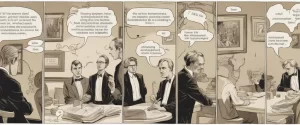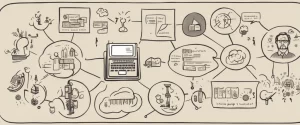
In the search for self-improvement and fulfillment, we often turn to literature for guidance and inspiration. Two books that have gained considerable popularity in recent years are “Better” by Atul Gawande and “Happier” by Tal Ben-Shahar. While these books explore distinct aspects of personal development, they both offer valuable insights into enhancing our lives.
Atul Gawande, a renowned surgeon and writer, delves into the realm of medicine and healthcare in his book “Better: A Surgeon’s Notes on Performance.” In this thought-provoking work, Gawande examines the importance of continual learning, adherence to established protocols, and the relentless pursuit of improvement. On the other hand, Tal Ben-Shahar, a former Harvard lecturer and positive psychology expert, presents his perspective on attaining happiness in his book “Happier: Learn the Secrets to Daily Joy and Lasting Fulfillment.” Expanding on the principles of positive psychology, Ben-Shahar explores the facets of happiness and provides practical techniques to lead a more fulfilled life.
While “Better” centers around Gawande’s experiences as a surgeon and addresses issues within the healthcare system, “Happier” adopts a broader approach, focusing on the universal pursuit of happiness. Despite these differences, both books share a common theme: the desire to improve oneself and find contentment.
This comparative study aims to highlight the contrasting approaches and perspectives that Gawande and Ben-Shahar bring to their respective books, examining the underlying themes, methodologies, and practical applications they propose. By delving into the ideas presented in these works and drawing comparisons, we hope to gain a more comprehensive understanding of the strategies and principles advocated by these prominent authors.
Throughout the study, we will explore the roles of self-reflection, perseverance, and adaptation in personal growth. Additionally, we will delve into the exploration of happiness, discussing the different perspectives offered by Gawande and Ben-Shahar and their approach to attaining lasting fulfillment. This comparative analysis aims to shed light on the distinct yet interconnected paths they advocate in the pursuit of improvement.
Through this investigation, readers will gain a deeper understanding of the possibilities available for personal growth and improvement by adopting both a critical and introspective lens. By examining the principles shared in “Better” by Atul Gawande and “Happier” by Tal Ben-Shahar, we hope to uncover valuable insights that can shape our own journey toward a better, happier life.
Brief Summary of Two Books
Better by Atul Gawande
“Better” by Atul Gawande is a thought-provoking book that explores the concept of improvement in various fields, ranging from healthcare to education, and even personal goals. Gawande, a prominent surgeon and writer, shares his experiences and observations to emphasize the importance of continuously striving for better outcomes.
The book begins by discussing the challenges and complexities faced by professionals in different industries. Gawande argues that despite advancements in technology and knowledge, professionals often struggle to consistently deliver effective results. He highlights that the key to improvement lies not solely in technical expertise, but in the ability to embrace innovation, learn from mistakes, and implement simple yet powerful practices.
Gawande delves into various case studies and real-life examples to illustrate his points. From analyzing the impact of checklists in reducing surgical errors to exploring the benefits of coaching in improving performance, he emphasizes the significance of deliberate practice, collaboration, and continuous feedback. The author also stresses the importance of engaging in “slow-thinking” and taking time to reflect on one’s actions and decisions.
Furthermore, Gawande acknowledges the existence of human fallibility and the inevitability of setbacks. He encourages professionals to adopt a learning mindset, incorporating methods of experimentation and adaptation to overcome challenges. Throughout the book, he presents poignant stories of people who have managed to make significant improvements, showcasing the power of perseverance and dedication.
Ultimately, “Better” serves as a call to action for professionals and individuals alike, urging them to actively seek out ways to enhance their skills, processes, and overall performance. Gawande’s insights and compelling narratives make for an inspiring and enlightening read, offering valuable lessons on how to achieve better outcomes in various aspects of life.
Happier by Tal Ben-Shahar
“Happier” by Tal Ben-Shahar is a self-help book that explores the ingredients for a fulfilling and joyful life. Drawing from the principles of positive psychology, the author shares practical strategies and insights to help readers lead happier and more meaningful lives.
Ben-Shahar emphasizes the importance of embracing our emotions, both positive and negative, as they provide valuable lessons and motivation for growth. He explains how we can cultivate happiness by focusing on our strengths, nurturing relationships, and finding purpose in our pursuits. The book also delves into the concept of gratitude and emphasizes its role in enhancing overall well-being.
Furthermore, Ben-Shahar addresses the pursuit of success and highlights the significance of prioritizing intrinsic motivations and personal values over external validation. He advocates for adopting a growth mindset and embracing failures as opportunities for learning and growth.
Throughout “Happier,” the author shares personal anecdotes, research findings, and practical exercises to encourage readers to implement positive changes in their lives. By offering a comprehensive approach to happiness, the book serves as a guide for individuals seeking greater contentment and well-being.
Comparison between Two Books

Similarities in Positive Thinking
One similarity between “Better” by Atul Gawande and “Happier” by Tal Ben-Shahar is their emphasis on the power of positive thinking.
In “Better,” Gawande explores various aspects of healthcare and how to improve it. Throughout the book, he emphasizes the importance of maintaining a positive outlook and mindset, both for healthcare professionals and patients. Gawande believes that a positive attitude can lead to better outcomes and improved patient care.
Similarly, in “Happier,” Ben-Shahar delves into the field of positive psychology and offers practical insights on finding happiness and fulfillment. He asserts that cultivating a positive mindset can significantly impact an individual’s overall well-being and life satisfaction.
Both authors stress the idea that positive thinking is not about denying or suppressing negative emotions but rather about acknowledging them and choosing to focus on the positive aspects of a situation. They argue that cultivating optimism and resilience can enhance problem-solving skills, improve relationships, and contribute to personal growth.
Both books also highlight the significance of gratitude as a tool for positive thinking. Gawande and Ben-Shahar discuss the benefits of practicing gratitude regularly and integrating it into daily life. The authors argue that expressing gratitude opens the door to positive emotions and shifts the focus from what is lacking to what is already present.
Overall, “Better” and “Happier” share the common message that positive thinking can greatly influence our experiences and overall well-being. Both books provide valuable insights into incorporating positive thinking into various aspects of life to improve outcomes and increase happiness.
Divergences in Positive Thinking
Better by Atul Gawande and Happier by Tal Ben-Shahar are both highly regarded self-help books that explore different aspects of personal development and how individuals can achieve a better and happier life. While both books may touch on the concept of positive thinking, they approach it from different angles, resulting in some divergence in their perspectives.
Better, written by renowned surgeon and writer Atul Gawande, is primarily focused on improving performance and achieving mastery in various fields. Gawande emphasizes the importance of continuous improvement, diligent practice, and learning from mistakes. While positive thinking is not the central theme of the book, Gawande acknowledges that having a positive mindset can enhance performance. However, he cautions against relying solely on positive thinking and instead advocates for a more practical and realistic approach.
On the other hand, Happier, authored by positive psychologist Tal Ben-Shahar, delves explicitly into the concept of positive thinking and its impact on happiness. Ben-Shahar argues that positive thinking plays a crucial role in leading a fulfilling life and explores various positive psychology techniques, such as gratitude, mindfulness, and optimism. He recommends actively cultivating positive emotions and mindset as a means to enhance overall well-being.
The divergence in the books emerges in the degree to which positive thinking is emphasized and the context in which it is discussed. While Gawande acknowledges the benefits of positive thinking, he steers his focus towards practical improvement and tangible actions. He encourages readers to enhance their skills through deliberate practice and continuous learning rather than solely relying on positive thinking. Gawande recognizes the role that critical analysis and acknowledging shortcomings play in improving performance.
In contrast, Ben-Shahar places more emphasis on the power of positive thinking. He presents it as a central pillar for increasing happiness and encourages readers to actively adopt positive practices to reframe their perspectives and overcome challenges. While Ben-Shahar acknowledges the importance of self-reflection and growth, positive thinking is positioned as a primary catalyst for achieving personal happiness.
In conclusion, while both Better and Happier touch on positive thinking, the divergence arises in their respective emphasis and context. Gawande advocates for a more balanced approach, focusing on practical improvement and learning from mistakes, whereas Ben-Shahar places greater emphasis on positive thinking as a transformative force for cultivating happiness.

Conclusion
Both “Better” by Atul Gawande and “Happier” by Tal Ben-Shahar are highly regarded books in their respective fields, but they offer different perspectives and insights.
“Better” by Atul Gawande is a book that explores the complexities of medicine and healthcare, focusing on the importance of continuous improvement in the field. Gawande, a surgeon himself, provides engaging anecdotes and stories to shed light on how small changes and innovations can have a significant impact on patient outcomes. This book is highly recommended for those interested in healthcare, medicine, and improving systems.
On the other hand, “Happier” by Tal Ben-Shahar is a book that delves into the science of happiness and positive psychology. Ben-Shahar, an expert in the field, presents practical strategies and concepts that individuals can apply to lead a more fulfilling and joyful life. He combines scientific research, personal anecdotes, and exercises to guide readers on their journey to finding happiness. This book is recommended for those seeking personal growth, happiness, and well-being.
Ultimately, the choice between the two books depends on your interests and what you’re looking to gain from reading. If you’re interested in healthcare and system improvement, “Better” by Atul Gawande is the better choice. However, if you’re looking for guidance on achieving happiness and personal growth, “Happier” by Tal Ben-Shahar would be more appropriate.


